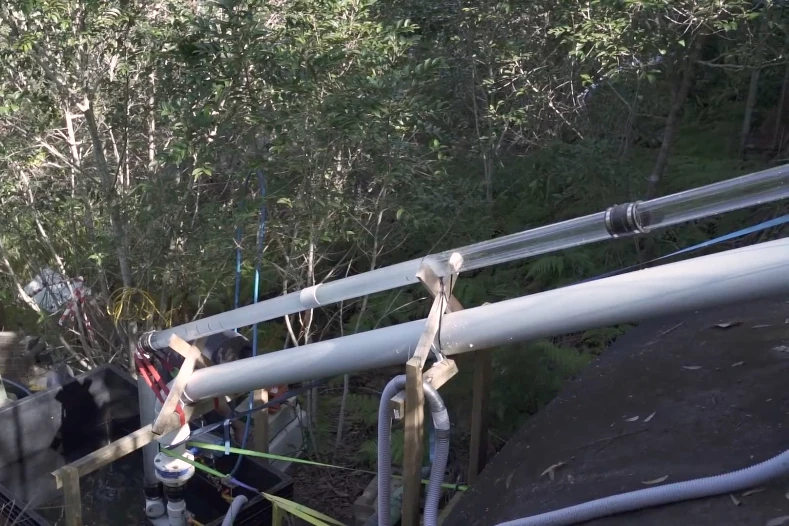Dams pose a great obstacle to fish migrating up rivers, potentially keeping them from breeding, thus leading to a decline in wild stocks. Australian scientists are on the case, though, with a possible solution known as the "tube fishway."
First conceived by the University of New South Wales' Assoc. Prof. John Harris, each tube fishway consists of … well, a long tube that stretches vertically from the water at the bottom of a dam, on its downstream side, up to the water on the other side of the dam, at the top.
Due to the pressure difference between the water at the upper end of the tube (behind the dam) and the lower end of the tube (below the dam), a hydrodynamic pumping system is produced. Stated more simply, a surge effect occurs, propelling water – and fish – up the tube.
Curious fish below the dam enter a funnel-shaped enclosure attached to the bottom of the tube, and are subsequently drawn up it and shot out of the top end, behind the dam. They can then continue on their migration up the river.
The whole process takes just a few seconds. What's more, air bubbles within the tube water help keep the fish oxygenated, plus they protect the animals against sudden changes in water pressure.

In a small-scale experiment, a 90-mm-wide (3.5-in) tube fishway was used to transport Australian bass from one tank to another, up an 8-meter (26-ft) elevation. And it is believed that the system should work on a much larger scale.
"Our numerical modeling work shows that this system will work reliably for pipes at least one meter [3.3 ft] in diameter, lifting fish more than 100 m [328 ft] vertically," says Prof. Bill Peirson, who is leading the project along with Dr. Stefan Felder. "This is potentially a game changer in the ecological management of large dams."
The scientists are now hoping to install an experimental tube fishway on the Marsden Street Weir, in the Australian city of Parramatta in the Greater Western Sydney region. They are also looking into ways of helping fish travel downstream over high dams and weirs, without being injured.
The testing rig can be seen in use, in the video below.
Source: UNSW




